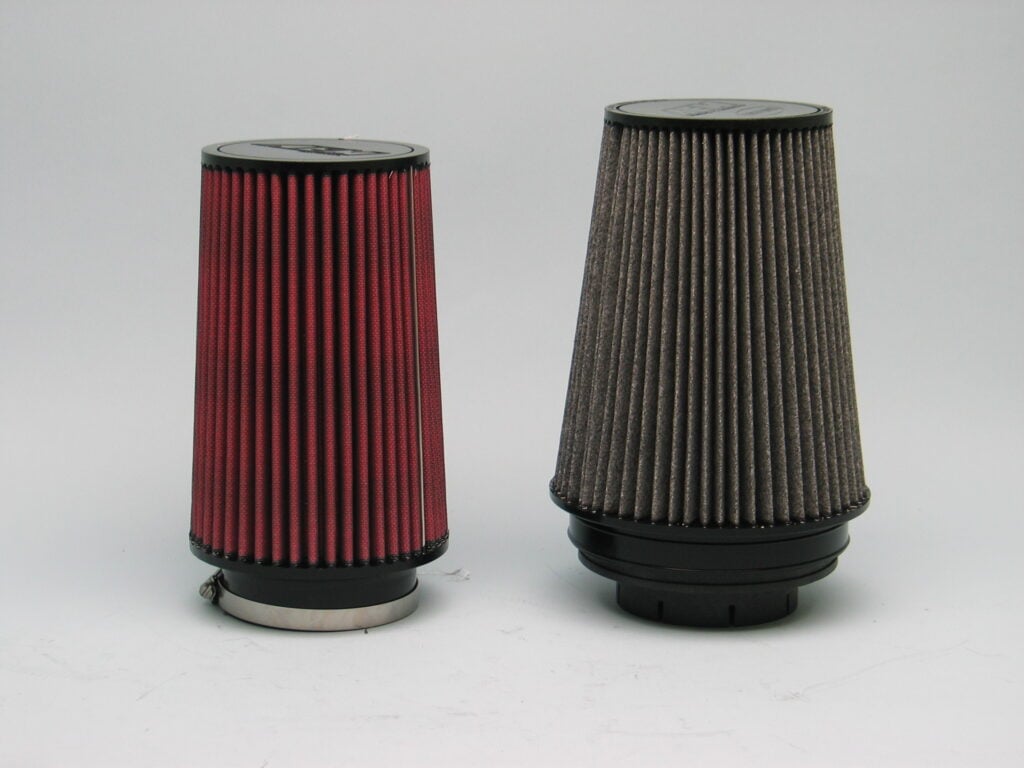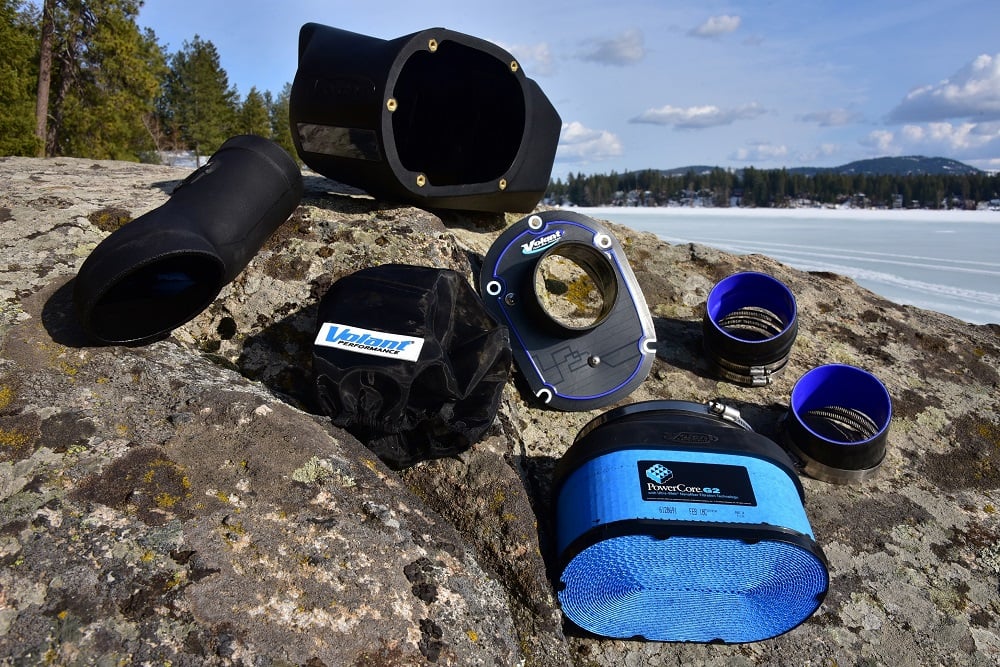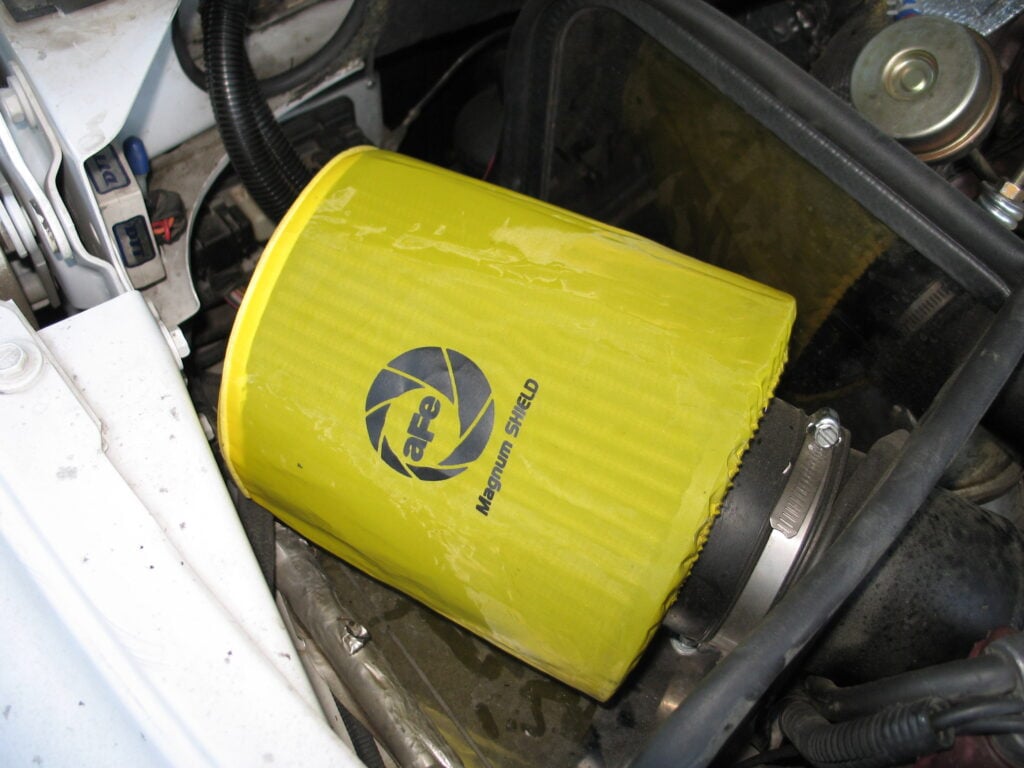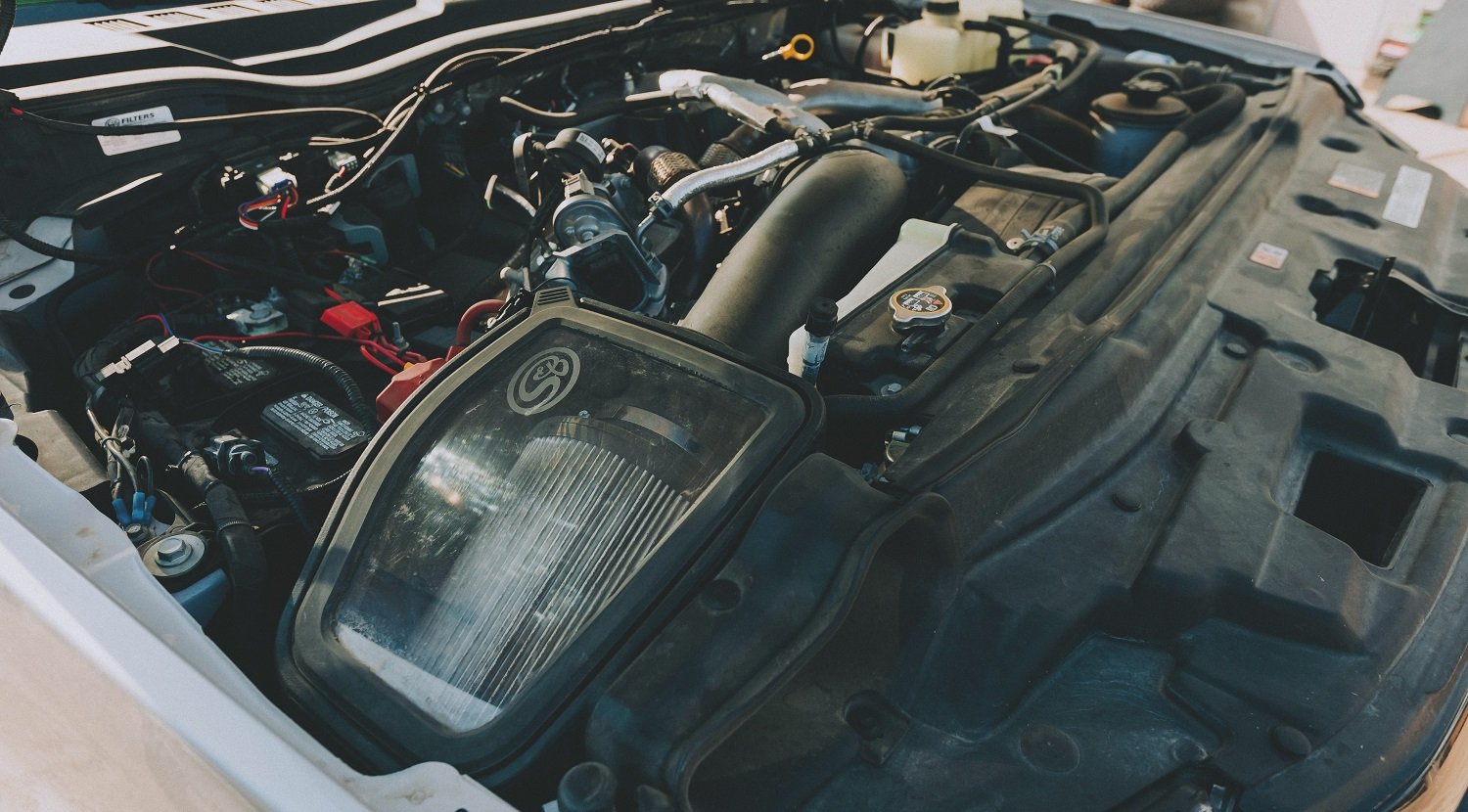Are you looking to add a cold-air intake system to your truck? You’re not alone. Cold-air intake kits are one of the first and most popular modifications that any truck owner adds, but what is a cold-air intake system? And what are the benefits of a cold-air intake? The assumption is often that any diesel truck owner that knows enough to purchase a cold-air intake kit knows why it can be helpful to their engine, but the exact reasons why are seldom delved into. We’ll try to explain how a cold-air intake kit can benefit you and answer the ultimate question: Is a cold air intake worth it?
Cold Air Intake
Cold-air intakes and air filter kits have been a staple of bolt-on engine mods as long as enthusiasts have been modifying engines. Over the years, they’ve gone from a simple open element air filter sitting atop the engine to highly thought-out computer-developed systems that pull air from outside of the vehicle. The improvements in efficiency, thanks to a cooler air charge entering the intake, are undeniable.
What is a Cold Air Intake?

In the beginning, air intake modification started with removing massively restrictive OEM air boxes that were partially suffocating the engine’s true potential. It was easy to make improvements back then; Adding an open-air filtration element just before the intake gave more potential for air flow than most engines ever needed. But an open element sitting over the engine absorbing heat from exhaust manifolds is not ideal, so the aftermarket air intake systems evolved by moving the opening of the intake further away, with air tubes and a shield surrounding the air filter that would act as a thermal barrier between the engine heat and a cooler air pocket. As air temperatures decrease, the density of the air increases. The denser the air, the more oxygen molecules it has (given the same volume of air). Enabling a cooler air charge at the intake means more oxygen heading to the engine in the same volume of air. It was quite effective and thusly ‘cold-air’ intake kits were born.
Open vs. Closed Cold Air Intake
As manufacturing methods improved and became more refined, air tubes became more streamlined and air passages were smoothed with fewer sharp edges to interrupt air flow in high-quality cold-air intake systems. The cooler air from a shielded corner of the engine bay was an absolute improvement, but it could be enhanced. The “open” air intake boxes and shielding could be better sealed and could draw air solely from the exterior. These “closed” cold-air intake systems would seal out the hot air of the engine bay and ensure that the engine is getting the coolest air possible. But you may notice that there are still many open cold-air intake systems for sale, like this AFE Magnum Force kit. At the same time AFE also offers the Momentum HD Pro 10R Stage 2 SI closed cold-air intake kit for the same Duramax truck. Why are there still open kits if closed kits are better? Let’s discuss the two reasons there are still both types available. First, you’ll notice that there’s close to a hundred-dollar price difference. Open cold-air intake kits generally have fewer pieces and a lower cost than a fully-enclosed sealed box. Secondly, there is still debate on the benefits of a totally sealed box where the air is pulled through an air snorkel at the front of the truck over an open kit. Some enthusiasts argue that the coldest air possible, even when drawn through a snorkel that restricts the volume of air entering, is the best setup. Others argue that it is most ideal to have the intake (air filter) shielded from direct heat but not airtight so there is the least amount of restriction. Whatever train you get on, Diesel Power Products has multiple options of both styles.
Cold Air Intake Filters
There are a few different options when it comes to filter media (the material the air passes through). There are paper air filters, cotton/oil air filters, and dry media reusable filters. The standard filter media that comes in most all vehicle’s air filters is paper. Paper-derived air filters do an excellent job of filtering particles out of the air, but they can also be known to restrict air flow in stock form. Paper air filters are disposable so you’ll be replacing paper filter elements as they get dirty.
The second filter media, and the standard in reusable air filters is the oiled cotton surrounded by a screen mesh. The air flows through and dirt & dust particulates get caught on the oiled cotton. The mesh screen keeps the media in place while not restricting air flow. With a special cleaner, the cotton can be washed and re-oiled to renew it. This was the first and is still the most common type of washable & reusable air filter made today. K&N is credited for inventing the oiled cotton air filter design and is still a juggernaut in the air filter aftermarket. They were offering oiled cotton filters before most other companies were ever conceived.

There is also a washable dry filter media. This is a one-piece synthetic media that hold form (needing no screen cage) and has no oil on the air filter. AEM’s Dryflow filters were one of the first to use a washable non-oiled air filter media with kits like this AEM Brute Force kit but other companies have followed suit with options like AFE’s Pro Dry S. Some enthusiasts prefer no oil on their air filters to ensure that nothing drips back to any sensors in the intake tubes. Other enthusiasts believe that the reusable dry media is too restrictive for the best airflow.
And one more option is available exclusively with S&B Filters. Many of us love the benefits of a cold air intake, but don’t want to mess with cleaning and potentially oiling a filter. Instead, we’d rather remove the old one and just slap a new one on in its place. S&B delivers just that with their dry, disposable filter options! These feature a similar media as a stock air filter (dry paper), but obviously in a large cone with their premium silicon.
Open Cold-Air Intake
This K&N Blackhawk Series kit is a good example of a high-end open-box cold-air intake system. It replaces the intake tube with a powdercoated aluminum intake tube, uses a DryFlow air filter option, and offers a heat shield to inhibit heat soke from the rest of the engine bay. It is not in a totally sealed box and the air filter ends up pulling in a combination of cooler air from outside the vehicle and a little bit from within the engine bay.
Closed Cold-Air Intake
A closed cold-air intake system offers most of the same or similar parts as an open-air box kit, except with a sealed (closed) airbox around the air filter to ensure that no warm air from the engine bay is making it into the air induction tube, and instead pulled air from outside the vehicle. In extra-dusty environments like constant off-road use, a closed airbox like on this S&B Ecodiesel kit can add longer intervals between filter cleanings and therefore might be a good option for off-road enthusiasts.

Is a Cold Air Intake Worth It?
Simple question: Does everyone you know who cares even a little bit about improving their truck’s power and fuel efficiency have an air intake kit? The answer is yes. They have all modified their air induction because it is one of the best and easiest ways to add a little more oomph and a few more miles to the tank in a modern diesel truck—and without voiding your manufacturer’s warranty (if you still have one).
Cold Air Intake Benefits
The theory behind a good cold-air intake system is that it takes in the coldest ambient air possible and with as little effort as possible. And the benefits are clear: More power, better fuel economy, better acceleration, and more.
The more ideal air mixture brought with a cold-air intake helps increase the engine’s efficiency. That translates into an increase in available power and torque using the same amount of fuel. Ultimately, you’ll see improved fuel economy as long as you’re not using that extra available horsepower by driving faster/harder.
Along with the increase in efficiency brought by a cold-air intake comes the potential for an Exhaust Gas Temperature drop. It’s not uncommon to see your EGTs drop by a hundred degrees or more when introducing cooler air into your engine.
It takes no major modifications, you can install it yourself in a couple hours, and it’ll improve the efficiency of your engine. You should already be clicking on this HERE to check one out for yourself!
How Much Horsepower Does a Cold Air Intake Add?
We’ll tell you right now that if you’re looking for an extra hundred horsepower then you can skip right over to our forced air induction options like these Fleece Cheetah turbos to get more cubic feet of air shoved into your diesel engine. The days of making large power gains with a bolt-on air intake are long gone. OEMs have refined their factory air induction systems and made them quite efficient. But there is still room for improvement as factory air intakes often have restrictive air boxes, noise suppressors, and convoluted tubing that the aftermarket can streamline to pick up an extra 10-15 horsepower and added low-end responsiveness.
Shop Cold Air Intake Kits at DPP!
Are you ready to start looking for your own cold-air intake system? We have a variety of air induction parts from air filters and snorkels to complete cold-air intake kits. Finding the best system for your truck is only a click away!


VERY INFORMATIVE AND NON BIAS
Thank you, appreciate the feedback.
Didn’t learn anything but a good article for a novice diesel owner
Thanks so much for taking the time to read and congrats on being a new diesel owner! If you have any questions, don’t hesitate to give us a call (888) 99-DIESEL or send an e-mail to [email protected]
Vents top of my fiberglass hood dump fresh out side air direct to kn cold air box in my 5.4 2021 f1504x4 runs good
A true ram air intake, nicely done!